Taqiyah vs Kippah vs Zucchetto, it's not so much a debate as an interesting comparison.…
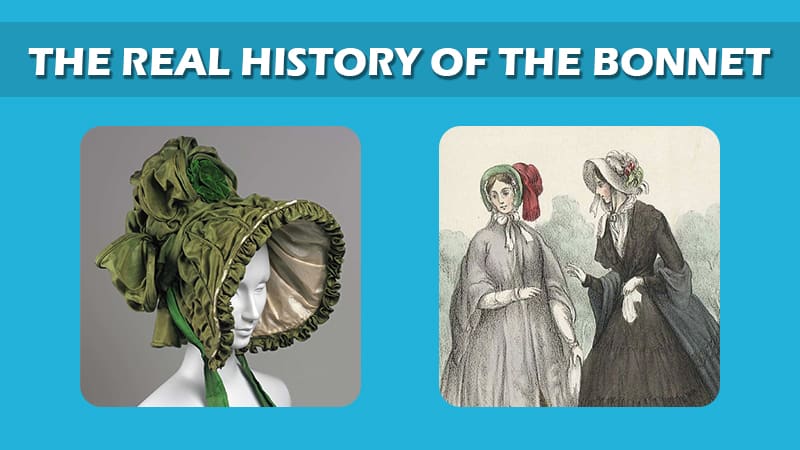
The Real History of the Bonnet (headwear) – A Quick Look
Bonnets were women’s most famous head covering in the 19th century. They were most popular in Europe and America, where almost all women wore a bonnet.
But by the 20th century, bonnets started going out of style, and by the 21st century, hardly anyone wore bonnets.
The only bonnets that outlasted are the tiny bonnets for babies and the still popular night bonnets.
So what happened to this once favorite head covering?
Did bonnets just run out of style, or was there another reason for their disappearance?
Bonnets have a long and fascinating history.
So, keep reading to find out all you need to know about the history of bonnets.
1. What is a Bonnet?
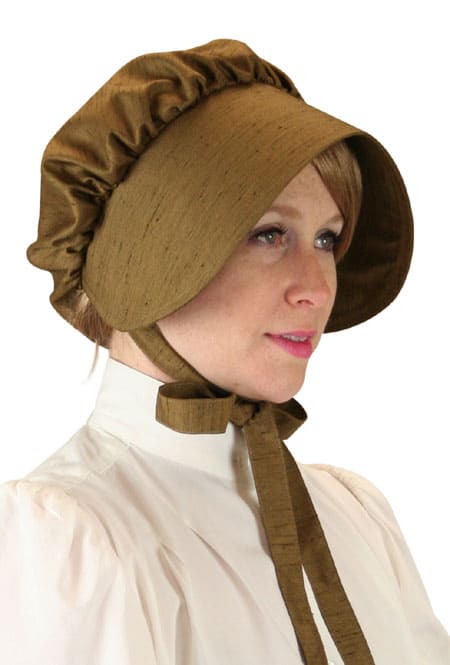
A bonnet is a hat usually made of a soft material that ties under the chin. There were various styles of bonnets, and Bonnets are old-fashioned accessories, and you are unlikely to see anyone wearing a traditional bonnet today.
Early bonnets were usually puffy. Some bonnets were brimless, but others had brims on the front that were either frilly or rigid. The brims shielded the face of the wearer from harsh weather and the public eye.
2. Why the Bonnet?
The earliest bonnets were designed for protection. They shielded the head and hair from sun, rain, and wind. Bonnets also protected a woman’s hair from dust and flour during household work. Bonnets also have a piece of fabric on the back that cover and protect the wearer’s neck.
Another primary role of bonnets was to protect a woman’s modesty. Covering the face and head was a sign of modesty, and many women chose bonnets for this purpose.
3. History of Bonnets
The first bonnets go back as far as the Middle ages. Back then, bonnets were worn by men, women, and kids. The bonnets for women and children were made with light fabric with ribbons to tie under the chin. Men usually wore bonnets made of wool.
Back in the 15th century, bonnets were popular headgear for men in some countries. In Scotland, the first bonnets were also known as flat caps. These were men’s bonnets, made with dyed wool. By the 1700s, men’s headwear was called caps, and only women’s and children’s headwear were bonnets.
Bonnets began rising in popularity in the 17th and 18th centuries. These bonnets were prevalent among rural women and were called slat bonnets. They were simple caps, brimless in the back and with a small brim on the front. They also had a small fabric on the back for neck protection.
Women wore bonnets to protect the head from the sun and keep dust and flour out of the hair during traveling and household work. Some women wore bonnets both indoors and outdoors for modesty. Married women and widows almost always wore bonnets.
Bonnets were also adopted as the attire of some religious groups. Some Christian communities advised women to wear bonnets during worship to show respect and modesty.
By the beginning of the 19th century, bonnets evolved and became more of a fashion item. Women from high social classes wore oversized bonnets made from expensive fabric adorned with ornaments.
In the 1800s, poke bonnets became popular. These bonnets had large brims that extended over the wearer’s face. They came in various styles and colors. Poke bonnets were widely available and became very popular among middle-class women because of their quality and affordability.
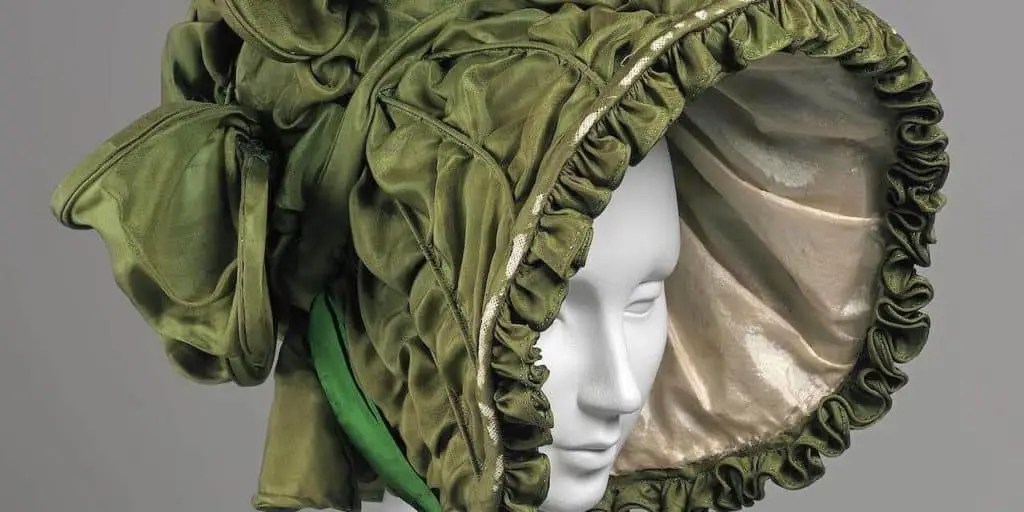
Bonnets also played a part during the years of slavery. All enslaved people had to wear European-style bonnets to distinguish between themselves. The bonnet material and style varied depending on the type of work. Outdoor and field workers wore the cheapest bonnets made with simple fabric, while indoor workers wore higher-quality European-style bonnets.
In the 20th century, bonnets started dwindling in popularity. Sun protection methods like umbrellas and hats became increasingly popular, and women no longer needed bonnets.
Also, haircuts and hair styling were a rising trend among high-class ladies, and no one wanted to hide their hair in public. By the late 20th century, only older women wore bonnets, and the once famous head cover soon became an accessory reserved for modest, old ladies.
4. Who Invented Bonnets?
Bonnets have existed since the 14th century, and by the 15th century, there were professional bonnet makers.
Yet, history doesn’t mention who designed the first bonnet. The first bonnet was probably homemade by somebody looking to shield themselves from extreme weather.
5. # Notable Facts About History of Bonnets
Here are the most interesting facts on the history of bonnets.
- The word bonnet is derived from French: The word bonnet comes from the old French word bonet. Bonet means a cloth used to cover the head.
- Women matched their bonnets with their aprons: Aprons were used along with bonnets as a fashion statement. The two garments were made with identical stitching and decorated with lace and bows. A matching bonnet and apron added elegance to a woman’s attire.
- Women usually had separate bonnets for work and church: Church was a social affair, and women wore their best outfits and expensive bonnets. Work bonnets were less elegant and made with low-grade material.
- Poor women recycled leftover materials to make bonnets: Fabric, needles, and threads were expensive, and many rural families couldn’t afford these. They sewed bonnets with pieces of old sheets, dresses, and pants.
- Young girls wore adult-size bonnets: For many households, the fabric was hard to come by. So women stitched adult-sized bonnets for their young daughters. Stitching one adult-sized bonnet was a cheaper option than sewing a new bonnet every few years until the girls grew up.
- Many women stitched their bonnets without a clear idea of a pattern: They guessed the length, width, and measurements. They also adapted the design to fit the quantity of fabric available. This approach made each bonnet unique, resulting in many ladies’ bonnet styles.
6. What Materials Are Used to Make the Bonnets?
People made bonnets with materials like silk, mixed fabrics, wool, and straw, and the type of material varied between different social classes.
Scotland made the earliest bonnets with dyed wool, but England and other European countries made Bonnets with cloth and velvet.
By the 19th century, silk was used to make the best and the most expensive bonnets. Only the rich and elite could afford silk bonnets. Many ladies reserved their silk bonnets for outdoor use and special occasions.
Middle-class women had separate bonnets for each season. Summer bonnets were usually made with straw and were lightweight, airy, and ideal for warm weather. Winter bonnets were stitched with heavy fabrics and were excellent for holding heat.
Poor, rural women couldn’t afford to buy bonnets. They stitched their indoor bonnets with leftover fabric pieces. They used any available fabric.
Sometimes women even used removable cardboard on the brims of their bonnets. They sewed strips on the bonnet brim and inserted cardboard into the strips. Cardboard stiffened the bonnet’s brim and kept the sun out of the face. They could remove the cardboard before washing it and reinsert it after drying the bonnet.
Today satin and silk bonnets are the most popular. Both these fabrics are used to make sleeping bonnets that protect hair during nighttime.
Silk bonnets are considered the best and highest quality. Silk is a natural fiber, and silk bonnets are more expensive. The choice between a silk or satin bonnet depends on how much you are willing to spend.
7. Is the Bonnet Still Used?
Yes, some types of bonnets are still used, but today’s bonnets are very different from traditional bonnets and serve a different purpose.
Nowadays, silk or satin bonnets are the most popular. Satin bonnets, also known as sleeping caps, protect hair during sleep and are popular among ladies worldwide. They are brimless and held with either a drawstring or an elastic band.
Baby bonnets are still common. Baby bonnets are small caps made with smooth fabric and tied under the chin. These bonnets protect a baby’s head and ears. The primary purpose of a baby bonnet is to keep the baby warm and cushion the head and neck. Baby bonnets are usually seen in baptisms, christenings, and other special occasions.
8. Best Bonnets
1. Floppy brimmed bonnet
The floppy brimmed bonnet is a perfect accessory for any costume! It’s made of 100% polyester and comes in one size – it will fit most women. The material can be hand-washed, and don’t put this cute piece into your washing machine or dryer because its delicate construction might lead to shrinking when exposed too high temperatures.
- Product: Bonnet Costume Headwear
- Material: 100% polyester
- Size: one size
- Closure: pull-on closure
- Care Instructions: hand wash only
- For: women
- Colors: red, black or white
Final Thoughts
Bonnets started as an accessory to protect hair from harsh weather. Then they became a sign of social class and fashion. People even used them to discriminate among different classes of enslaved people at one point in history.
But bonnets couldn’t outlive the lifestyle changes in the 20th century. Caps, hats, and umbrellas entered the fashion world and replaced traditional bonnets. They were more practical, more affordable, and easier to use. Also, modern women did not want to conceal their faces and hairdos under a bonnet.
Today bonnets are much less prevalent. You’ll only see a bonnet on a baby’s head during a baptism or a lady wearing one to protect her hair at night. If you want to wear a bonnet today, your best option is a satin or silk bonnet to cover your hair during nighttime. It’s not even close to a traditional bonnet, but it’ll do the job of keeping your hair in place.
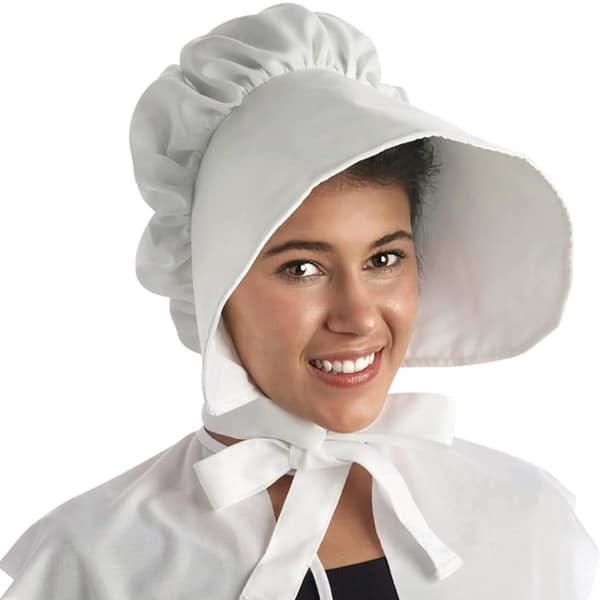
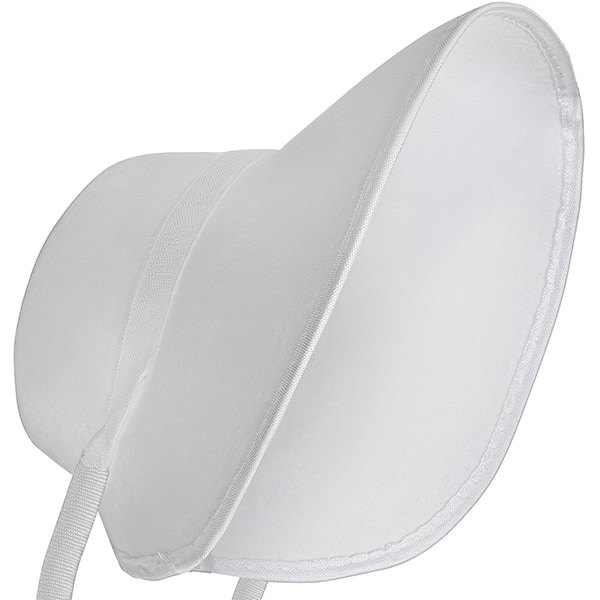
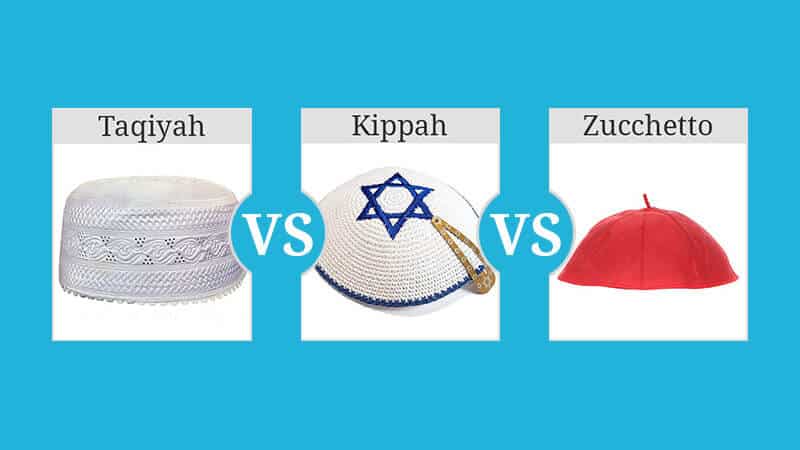
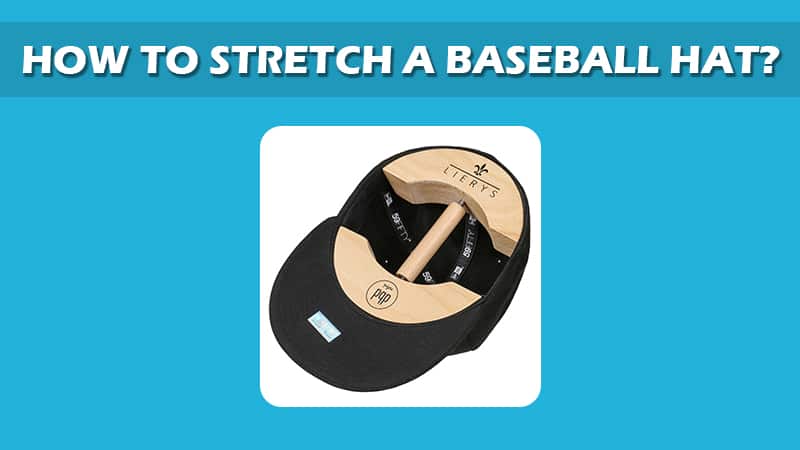

This Post Has 0 Comments